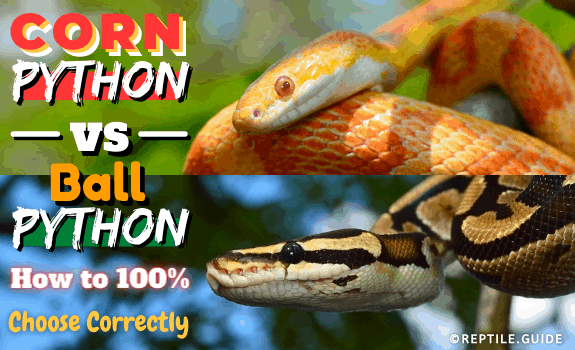In the battle of corn snake vs ball python, can there truly be a winner? No, there can’t—Both have excellent qualities and make a good beginner snake.
Even so, you can only have one first snake so let’s discuss the two snake species and see whether the corn snake or the ball python is the right first snake for YOU.
In This Article
In Short
- Ball pythons aren’t hard to handle if you’re not afraid of them.
- Corn snakes are excellent pet snakes for people who are uncomfortable with giant reptiles.
- The corn snake is a likely choice for first-time snake owners since it’s smaller and a better introduction to large animals.
What Are Corn Snakes?
Before you can familiarize yourself with the care of corn snakes, you need to know what a corn snake is.
The corn snake (Pantherophis guttatus) is a North American rat snake species from the Southeastern and Central United States.
Corn snakes belong to the family Colubridae, which includes some of the world’s most venomous snakes. The corn snake itself, however, lacks functional venom.
Along with ball pythons, it’s also one of the most common snake species in the pet trade.
What Are Ball Pythons?
The ball python (Python regius) is a large snake from the family Pythonidae.
Wild ball pythons come from the Western part of Central Africa.
As you’d expect from a python, ball pythons lack venom and use constriction to kill their prey.
Corn Snake vs Ball Python: Differences Explained
When discussing the ball python vs. corn snake dilemma, there are both similarities and huge differences.
Cost
The price of both ball pythons and corn snakes depends heavily on the morph involved.
Common morphs like the wild-type morphs are generally far cheaper than fancy color morphs.
For a point of reference, let’s take a look at some of the ball python morph prices:
- Yellow Belly – $50
- Vanilla – $100
- Purple Passion – $400
- Highway – $550-$650
- Blue-Eyed Leucistic – $800-$1,000
- Scaleless – $2,500
Now, let’s take a look at prices for some of the corn snake morphs:
- Normal – $30
- Ghost – $50
- Coral Snow – $130
- Blood Red Pied-Sided – $250
- Palmetto – $1,500
There are far more basic corn snake morphs for sale for under $75. Most basic ball python morphs come in at around $80 and closer to $150 for a slightly adventurous morph.
We suggest a basic morph if you’re a first-time snake owner because they’re more affordable.
As far as pricing is concerned, ball pythons tend to be more expensive than corn snakes.
Handling
Handling is one way in which ball pythons and corn snakes are very much alike.
Although ball pythons are bulkier and more muscular than corn snakes, they’re NOT difficult to handle.
You’ll need to provide more support to a ball python, thanks to the extra weight.
A corn snake is a MUCH lighter animal, and you can easily handle one with one hand.
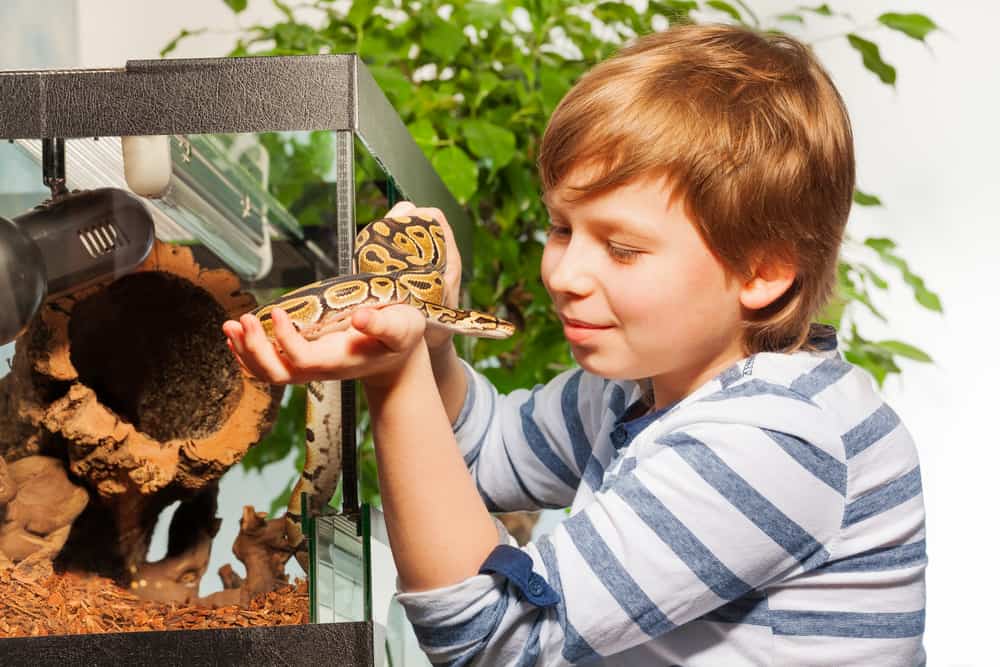
If you’re a relatively calm person, and you can live with the idea of handling 3 lbs. of snake, then ball pythons might be good pet snakes for you.
If you’d prefer something smaller, corn snakes are better.
Both of these snakes take well to handling, but there are times when you should NEVER handle your corn snake or ball python. These include:
- After the snake eats
- After handling the snake’s food items
- When the snake is getting ready to shed
Temperament
Ball pythons and corn snakes are both good pet snakes, thanks to their easy-going temperament.
As a rule, ball pythons tend to be a bit more laissez-faire in their attitudes than corn snakes.
When threatened, a ball python will typically curl into a ball (as the name suggests).
Corn snakes aren’t known for their willingness to strike and will probably try to slither away.
In short, a ball python thinks, “If I can’t see it, it can’t see me,” and a corn snake flees from trouble.
Of course, either will bite if it feels severely threatened, but a corn snake is slightly more likely to.
With proper handling, the temperament of either a ball python or a corn snake should mean you never face a nasty situation.
As with any animal, if it shows signs of being in a grumpy mood, give it space and respect its privacy.
Lifespan
Before choosing between a corn snake or a ball python, considering their lifespan is a good idea.
Ball pythons usually live for around ten years in the wild, in exceptional cases. Due to predator pressure and other factors, most wild ball pythons are lucky to see eight years.
In captivity, a ball python may live to see 30 years if it’s well cared for, and the oldest on record was 48 years old when it died. The average lifespan in captivity is between 20-25 years.
Like most rat snakes, corn snakes don’t have a long life expectancy in the wild. In most cases, they’re lucky to see six years.
In captivity, where corn snakes have dutiful snake owners to tend to all their needs, corn snakes can live for 15-20 years. The eldest corn snake on record lived for a whopping 32 years and three months.
If you DON’T want a snake with a long life span, a corn snake is a better idea.
Overall Size
Where size is concerned, ball pythons and corn snakes are similar but different. In length, there’s not a massive difference between the two species.
Ball pythons reach around six feet (180 cm), and corn snakes reach lengths of around five feet (150 cm).
The most significant difference lies not in the length of the snakes, but in their build.
Corn snakes are thin, lithe predators, even though they’re constrictors.
Ball pythons are constrictors in every sense of the word, which means they’re bulky, with muscle power to match.
Trying to handle a five-foot corn snake will seem like a much easier task than handling a five-foot ball python.
For reference, a ball python can weigh up to 3.6 pounds, while a corn snake maxes out at 1.9 lbs.
Male snakes of either species tend to be smaller than females.
Ball Python vs. Corn Snake Bite
Corn snakes and ball pythons rarely bite.
A bite from a ball python is nothing to trifle with and can be an uncomfortable experience, but it’s unlikely to be as painful as you think.
Corn snake bites are also harmless, though they hurt.
While both snakes are unlikely to bite you, a bite from a ball python can do slightly more damage than that of a corn snake.
The only reason for this is that both snakes are constrictors. They have backward-curved teeth that help them grip their prey while they constrict it.
Neither snake will typically latch onto you when they bite since constrictors tend to bite once as a warning, then let go.
If they DO latch onto you, you can do severe damage by pulling them off since this will only result in more torn flesh.
Instead, it’s best to wait till the snake releases, which usually takes less than a minute.
You’ll probably experience some pain in either species and a set of clean curved tooth marks. The only difference is that a ball python will leave larger bite marks.
Enclosure Size and Setup
Before setting up an enclosure, you need to consider ball pythons’ size or that of corn snakes.
There’s a considerable difference in the overall size and weight of the two species in question.
Corn snakes are much smaller, and adults can live in an enclosure of around 30 inches long, 12 inches wide, and 12 inches tall.
Ball pythons require a far larger enclosure since they’re larger snakes overall.
You should provide an enclosure of around 36 inches long, 18 inches wide, and 16 inches high for an adult.
There’s also a slight difference between the humidity levels required by the two snakes.
The corn snake humidity levels should be in the 65-75% range, while that for a ball python is 50-60%.
The temperature range also differs somewhat.
Corn snakes require a temperature range of 75-82°F on the cool side of their enclosure and 80-85°F on the warm side.
Ball Pythons require a temperature range of 75-80°F on the cool side of their enclosure and 88-92°F on the warm side.
Appropriate Prey Items
Corn snakes and ball pythons are both easy to feed.
When considering corn snake vs. ball python, the only real difference is that adult ball pythons can eat larger prey items.
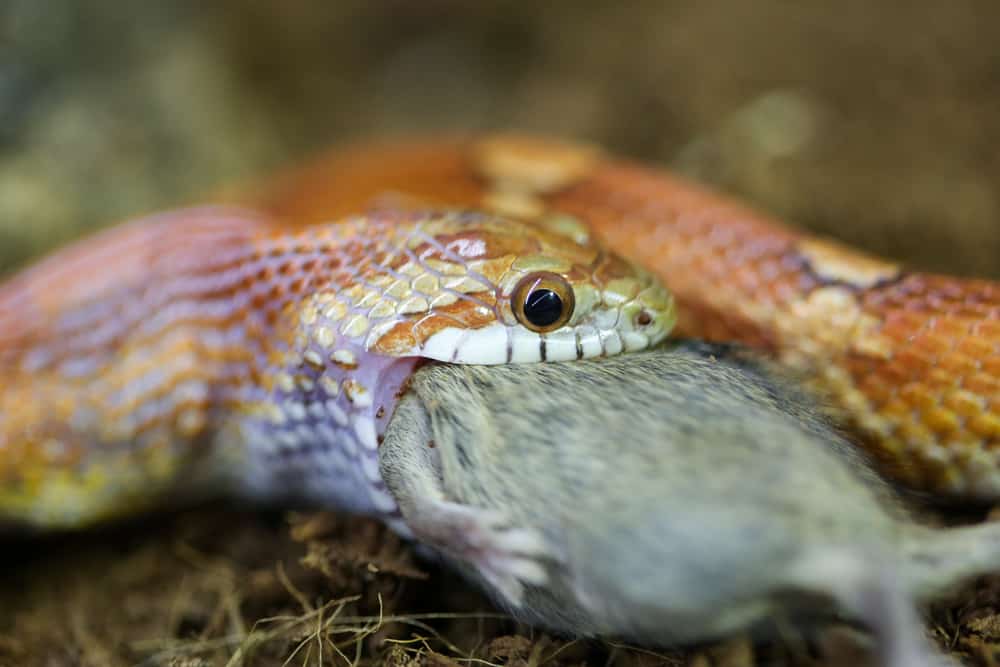
It would be best to raise both species on pinky and fuzzy mice and rats and other suitable prey in that size range (a varied diet is essential).
The food sizes should grow as the snake does.
When they reach adulthood, ball pythons can eat adult rats, as well as small guinea pigs and rabbits (no larger than an adult rat).
An adult corn snake can eat nothing larger than a full-grown mouse usually.
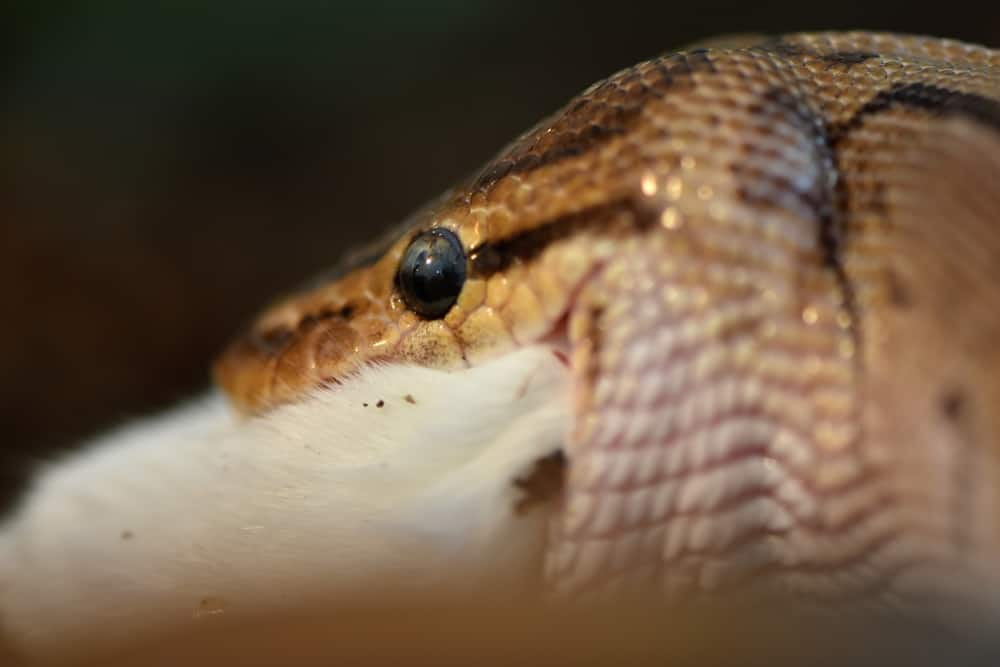
Top Tip: Avoid feeding your snake pet live rodents. Frozen thawed rodents are a much better option since they don’t pose any harm to the snake.
Physical Appearance
Both ball pythons and corn snakes have many different morphs, including some blue pet snakes.
Thanks to the hundreds of color morphs between the two species, color is not a reliable differentiating factor between corn snakes and ball pythons.
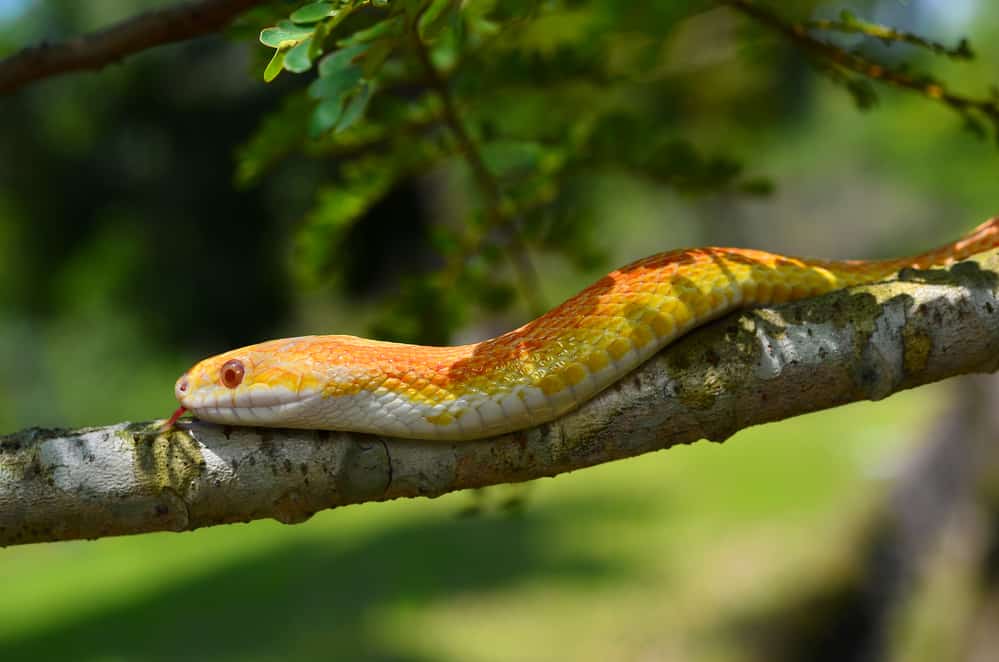
As you saw earlier, the two snakes are about the same length. One comes from tropical climates, and the other is from a more temperate region.
They’ve both adopted a solid musculature to account for their life as constrictors.
Corn snakes tend to be leaner and lither, though still well-muscled, and have a narrow head. Ball pythons are bulky and have broad, diamond-shaped heads.
Wild-type ball pythons are dark brown and black, while wild-type corn snakes are brown and orange.
Ease of Care
Both of these snakes make great pets and are equally easy to care for.
The only real consideration is that ball pythons do everything bigger. They have bigger enclosures, make bigger messes, and need bigger food.
Apart from size, there’s no real difference in the difficulty level of keeping these snakes.
Potential Health Problems
These two species suffer from most of the same health problems that pet snakes generally face.
You may encounter mouth rot, which is a mouth infection that manifests as swollen or bleeding gums.
Both snakes are susceptible to it, and you SHOULDN’T face this problem if you keep your snake well.
Dermatitis is a skin infection that can affect both corn snakes and ball pythons. It’s usually the result of shoddy cleaning practices.
Respiratory diseases are also something that may affect either snake and typically result from using the wrong substrate, excessive humidity, or low temperatures.
All snakes may suffer from internal or external parasites, so be sure to have your pet tested at least once a year for internal parasites like worms.
If your snake is captive bred, external parasites like mites and ticks shouldn’t be a problem. You’d still be wise to keep a close eye, though.
The one disease that’s more likely to affect pythons is Inclusion Body Disease (IBD). It’s a viral disease that affects either the lungs or digestive tract and is typically fatal.
IBD isn’t common, but we recommend doing more research about it if you buy a ball python. You can read more about this disease on the VCA Vets page about snake diseases.
Best First Snake
If you’re looking for the right snake to be your first pet, both ball pythons and corn snakes make excellent pets.
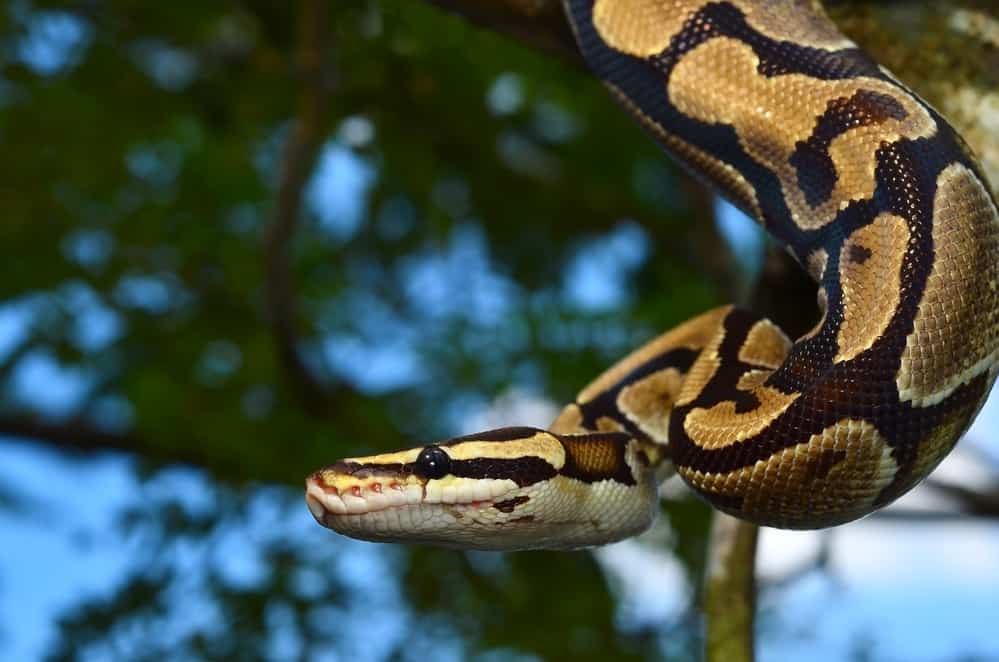
We’d say that a corn snake is the best first snake.
Their small size makes them easy to handle and gives you the chance to get used to keeping snakes as pets.
Easiest Snake to Care For
By now, you must wonder if a corn snake or ball python is easier to care for. There’s no real reason that one snake would be easier to care for than the other.
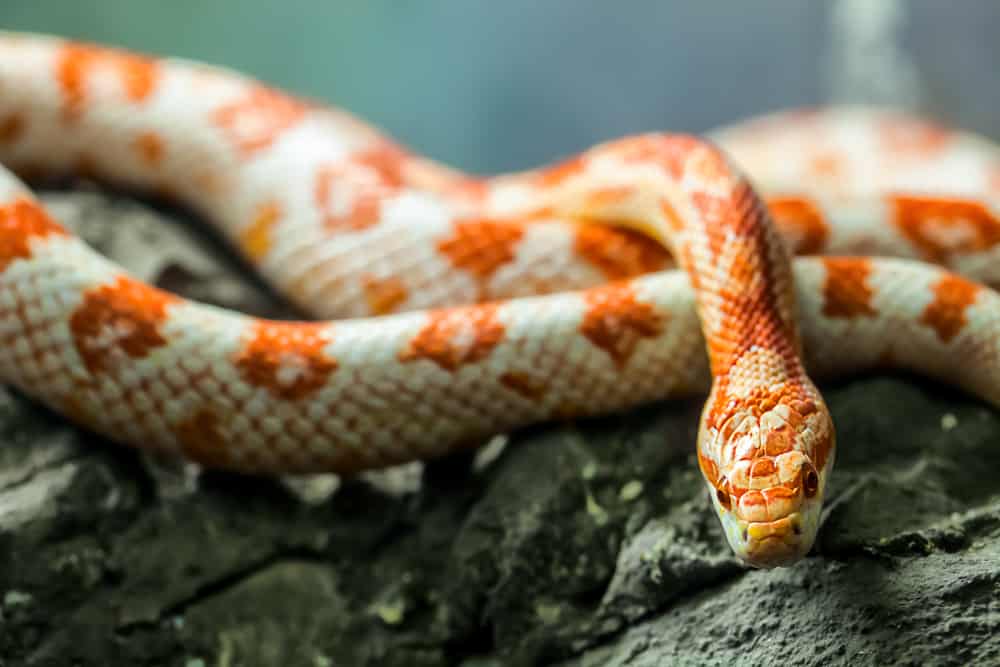
Apart from the fact that ball pythons are much bigger, have proportionately larger enclosures, and produce more waste, the care levels are essentially the same.
In that sense, a corn snake is the easiest snake to care for. Ball pythons can offer some other challenges to the new keeper as well.
They tend to be picky eaters, can have problems shedding, and are vulnerable to stress. Corn snakes are unlikely to offer any of these disadvantages.
Who Should Get a Ball Python?
A ball python makes an excellent pet, but it’s NOT the right choice for everyone.
Primarily, the downside of a ball python is its size. They’re much bulkier than a corn snake, and not every keeper is comfortable handling that much snake.
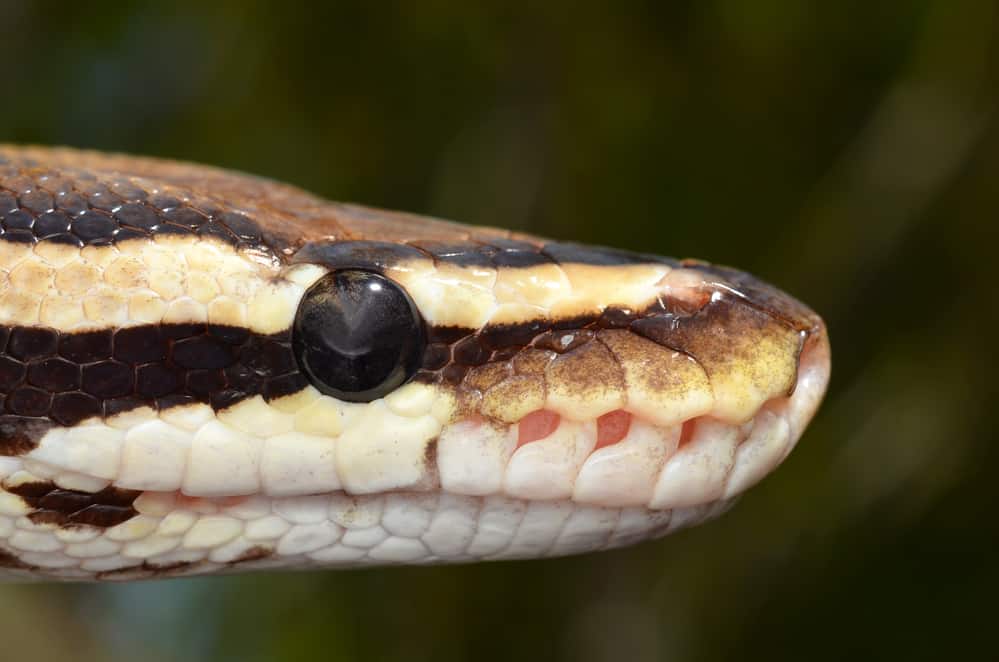
Since it’s a more robust snake, a ball python also requires a larger enclosure. An adult ball python requires a cage of around 36 inches long, 18 inches wide, and 16 inches high.
Ball pythons require little by way of cage setup. As with a corn snake, your ball python will require a decent substrate, a water bowl, a heat source, and an appropriate cage climate.
A ball python is generally just as affordable as a corn snake, though the price range is slightly higher.
In short, you should get a ball python if:
- You want to start with a basic enclosure setup.
- You want a snake with an easy-going temperament.
- You’re willing to pay at least $50 for your first snake.
- You have sufficient space for at least a 40-gallon enclosure.
- You don’t have a problem with handling large animals (especially reptiles).
Who Should Get a Corn Snake?
A corn snake is an ideal choice for most snake owners or those making their first foray into snake ownership.
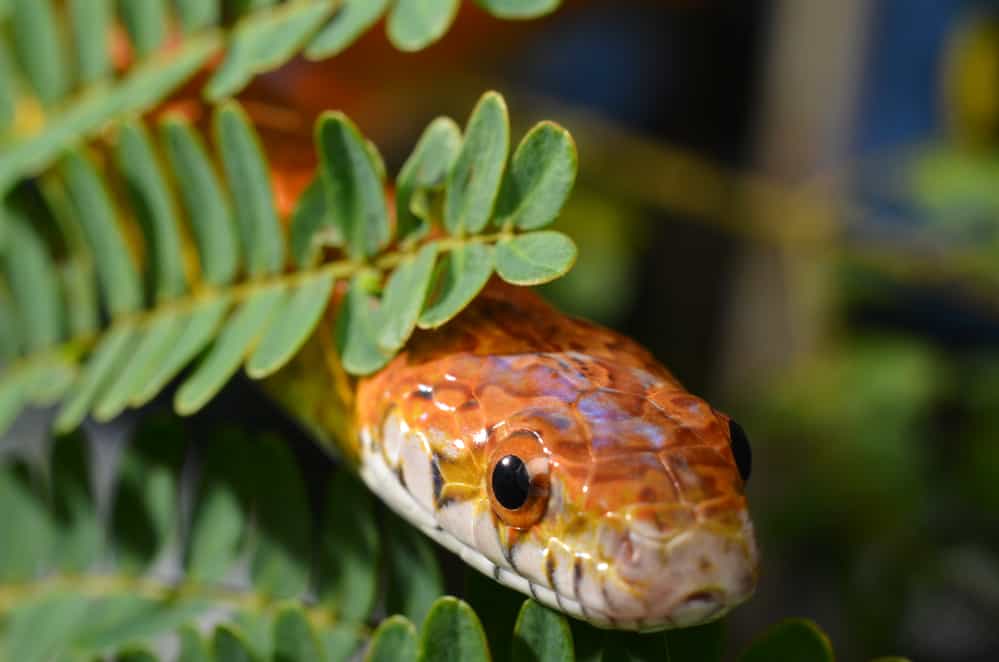
These active snakes are an excellent choice for pet owners with small amounts of space.
Corn snakes only require an enclosure size of around 30 inches long, 12 inches wide, and 12 inches tall.
If you’re getting your first snake, this is a great starter snake. Corn snakes DON’T tend to be fussy eaters and require minimal setup.
As long as its cage setup has a decent substrate, a water bowl, a heat source (like a heat mat, heat pad, or heat lamp), and an appropriate cage climate, your corn snake will be happy.
A corn snake is an ideal choice if you’re not entirely comfortable with large snakes. Corn snakes are considerably less bulky than ball pythons.
In short, you should get a corn snake if:
- You’re nervous around giant snakes.
- You want to start with a basic cage setup.
- You don’t have a lot of space to keep your new pet.
- You want a snake with an easy-going temperament.
- You’d like to start with an affordable snake (around $30 for a normal morph).
If your heart’s set on getting a baby corn snake, we can show you how to care for it!
Can Corn Snakes and Ball Pythons Live Together?
Absolutely not! If you tried to keep corn snakes and ball pythons together, you’d have Corn Snake vs. Ball Python: MMA Version.
The best you can hope for in this situation is one dead snake (probably the corn snake) and one injured one (corn snakes don’t go down without a fight).
If you genuinely want to keep both a corn snake and a ball python, the responsible thing would be to give each one a separate enclosure.
We hope you’ve enjoyed this article about corn snake vs. ball python and that it has helped you decide which would be your best first pet snake.
If you’d like to read more about corn snakes, check out our article about albino corn snakes.
We also have stacks of content about ball pythons, like the articles about albino ball pythons and Mojave ball pythons.
Now that you know all about ball pythons and corn snakes, which is the right snake for you? Drop a comment below, and let us know.
